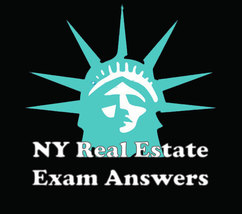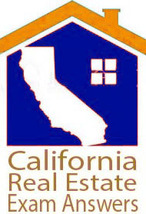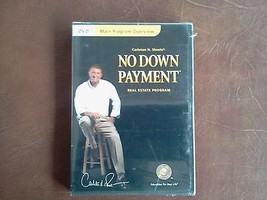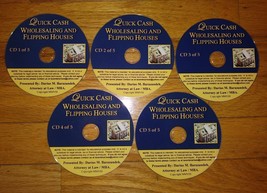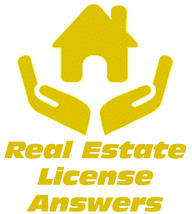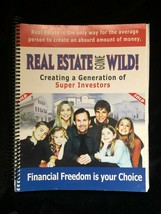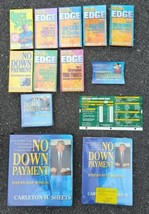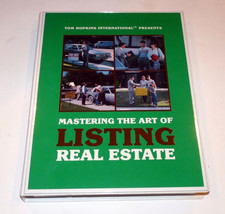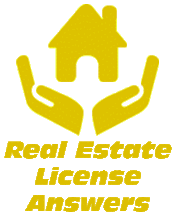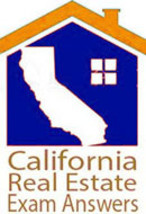6Months access to PreLicense Real Estate and 42 similar items
6Months access to PreLicense Real Estate Guides
£75.39 GBP
View full item details »
Shipping options
No shipping price specified to GB
Ships from
United States

Return policy
Purchase protection
Payment options
PayPal accepted
PayPal Credit accepted
Venmo accepted
PayPal, MasterCard, Visa, Discover, and American Express accepted
Maestro accepted
Amazon Pay accepted
Nuvei accepted
View full item details »
Shipping options
No shipping price specified to GB
Ships from
United States

Return policy
Purchase protection
Payment options
PayPal accepted
PayPal Credit accepted
Venmo accepted
PayPal, MasterCard, Visa, Discover, and American Express accepted
Maestro accepted
Amazon Pay accepted
Nuvei accepted
Item traits
| Category: | |
|---|---|
| Quantity Available: |
Only one in stock, order soon |
| Condition: |
New |
Listing details
| Seller policies: | |
|---|---|
| Shipping discount: |
Shipping weights of all items added together for savings. |
| Posted for sale: |
More than a week ago |
| Item number: |
1691227342 |
Item description
Get 6month subscription for just $99.99!
Visit www.RealtyKeyCA.com for more exclusive offers!
After subscribing, please email us at [email protected] to activate your access. This step is essential for us to set up your subscription account on our website.
To set up your account, please include:
Your email
Your preferred username for our site
Your chosen password
(Optional) Proof of payment for your subscription
We typically create accounts within minutes, but please allow up to 24 hours.
Thank you!
—James
You will download an instruction file from this website with steps to access our online guides, which can be viewed on computers, tablets, and phones. Please note that the guides are view-only and cannot be downloaded. We have helped countless customers successfully pass.
In a civil case, the party bringing suit for injury is called the
A. plaintiff.
B. attorney.
C. defendant.
D. judge.
10 of 25 In the United States, the primary source of the law comes from
A. civil law.
B. statutes.
C. case precedents.
D. state regulations.
11 of 25 Which state court is known as the "people's court?"
A. Family Court
B. Small Claims Court
C. Court of Appeals
D. District Court
12 of 25 Which of the following is not an equitable remedy?
A. Liquidated Damages
B. Rescission
C. Quiet title
D. Foreclosure
13 of 25 The law enforces promises through
A. monitoring our daily activities.
B. the use of contracts.
C. the preservation of order.
D. setting standards.
14 of 25 Certain amendments will be of particular interest to real estate professionals because
A. they discuss real estate transactions.
B. they impact property rights.
C. everyone should know the amendments.
D. they explain implied powers.
15 of 25 Another name for common law, which is the overall accumulation of judicial decisions is what?
A. Constitutional law
B. Case law
C. Administrative law
D. Contract law
16 of 25 In a typical civil case, the burden of proof is on the
A. judge.
B. officer of the court.
C. defendant.
D. plaintiff.
17 of 25 Which of the following is NOT an important source of law in the United States?
A. International law
B. United States Constitution
C. Local ordinances
D. Rulings of federal, state, and local agencies
18 of 25 The individual state's common laws of torts and contracts are unique because
A. they are the same as federal contract laws.
B. they can be enforced on a federal or state level.
C. the powers of these belong exclusively to the state.
D. they are considered universal.
19 of 25 What is another term given to case law?
A. State law
B. Common law
C. Property law
D. Civil law
20 of 25 During jury selection, parties may not use preemptory challenges because of an individual's
A. bias.
B. race.
C. age.
D. economic status.
21 of 25 Mary and Ben were having a dispute over an employment contract. They agreed to allow a third party to listen to their issues and help them come to a resolution. This is a description of what type of dispute resolution?
A. Arbitration
B. Litigation
C. Mediation
D. Estoppel
22 of 25 In a civil case, pleadings refer to
A. counter-claims filed by the defendant.
B. each party's side of the dispute.
C. gathering relevant evidence.
D. filing suit.
23 of 25 Which of the following is NOT a purpose of laws in our society?
A. To make associations between individuals and governments
B. To set standards
C. To settle disputes
D. To safeguard liberties and rights
24 of 25 In a civil case, the primary goal is to compensate the injured party for the damage done to him or her by
A. establishing a case precedent.
B. awarding either a legal remedy or equitable remedy.
C. not providing an equitable remedy.
D. requiring a specific performance from the plaintiff.
25 of 25 It is key for agents to learn about the laws because
A. they need to be able to memorize them.
B. they should be able to give their clients legal advice.
C. they have too many laws that apply to their transactions.
D. they need to know the origination and support for those rules.
Bonus Chapter1 questions with NO answers
1. The law serves as a guide for what in our society?
2. What is the formal method the law offers for settling disputes?
3. The law protects our numerous liberties and rights from what?
4. How does the law enforce promises?
5. What is the basis of law in the United States?
6. What do we call the overall accumulation of judicial decisions?
7. What did the Romans contribute to the legal system?
8. Why did Spanish civil law form the basis for California’s early legal system?
9. What is a substantive law?
10. What is a procedural law?
11. Define civil law and criminal law.
12. What are four areas of difference between civil law and criminal law?
13. Name three important sources of United State law.
14. How does the Bill of Rights protect individual rights?
15. What is due process?
16. What are the implied powers that the Constitution gives to Congress?
17. What power do federal administrative agencies have?
18. What laws belong exclusively to the states and not to the federal government?
19. Why was the Uniform Commercial Code enacted?
20. What are local ordinances?
21. What are the two main courts in the United States?
22. What are judicial circuits?
23. What are the two types of courts in California?
24. What do appellate courts do?
25. Who are the parties involved in a civil lawsuit?
26. What are the main steps in a civil case?
27. What happens during discovery?
28. If a defendant does not have insurance to cover a judgment, what avenues are available for collection?
29. What are liquidated damages?
30. What is meant by reformation?
31. What is mediation?
32. What is arbitration?
CA: “L.A. of R.E” Chapter 2 quiz with no answers
1 of 25 Tangible property is physical, visible, and
A. abstract.
B. conceptual.
C. material.
D. imperceptible.
2 of 25 What term means the right to mortgage a property as collateral for debt?
A. The right to exclude
B. The right to encumber
C. The right to finance
D. The right to rescind
3 of 25 The metes and bounds description always identifies an enclosed area by starting at an origination point called
A. point of beginning.
B. base point.
C. base point.
D. conception.
4 of 25 Items of personal property are also called
A. appurtenances.
B. fodder.
C. chattels.
D. interests.
5 of 25 The three unique characteristics of land are immobility, indestructibility, and
A. production.
B. heterogeneity.
C. function.
D. cultivation.
6 of 25 The north-south area between consecutive meridians is called a
A. lot.
B. tier.
C. section.
D. range.
7 of 25 What is the conversion of real property to personal property by detaching it from the real estate called?
A. Assignment
B. Severance
C. Fasten
D. Allocate
8 of 25 What type of survey locates and verifies all property corners and boundaries, shows the location of all improvements in relation to the property lines, includes an area of the overall property and shows any existing encroachments?
A. A location survey
B. A construction survey
C. A boundary survey
D. A site planning survey
9 of 25 What type of surveys use portable receiving antennas to gather data transmitted from satellites which are used to calculate the position of the object being located on the surface of the earth?
A. TA/AC surveys
B. ALTA surveys
C. GPS surveys
D. ALTA/SM surveys
10 of 25 What type of survey is a boundary survey with the additional location of all the interior improvements?
A. A topographic survey
B. A location survey
C. A site planning survey
D. A construction survey
11 of 25 What did the federal government develop to simplify and standardize property descriptions as a replacement for the cumbersome and often inaccurate metes and bounds method?
A. The lot and block method
B. The rectangular survey system
C. The recorded plat method
D. The public survey system
12 of 25 What type of survey includes a topographic survey of a parcel of land which will be divided into two or more smaller tracts, lots or estate divisions?
A. A location survey
B. A construction survey
C. A site survey
D. A subdivision survey
13 of 25 What describes real estate and the bundle of rights associated with owning the real estate?
A. Personal estate
B. Community property
C. Personal property
D. Real property
14 of 25 What type of property is ownership of anything that is not real estate and the rights associated with owning the item?
A. An emblement
B. Real property
C. A datum
D. Personal property
15 of 25 Property rights that are said "to run with the land" and includes things such as air rights, surface rights and subsurface rights are called
A. fixtures.
B. emblements.
C. appurtenances.
D. chattels.
16 of 25 What describes items of a tenant's personal property that the tenant has temporarily affixed to a landlord's real property in order to conduct business?
A. Datums
B. Accessories
C. Personal devices
D. Trade fixtures
17 of 25 What type of rights apply to the real estate contained within the surface boundaries of the parcel?
A. Littoral rights
B. Water rights
C. Encumbrance rights
D. Surface rights
18 of 25 What is the act of converting personal property to real property by attaching it to the real estate called?
A. Affixing
B. Severing
C. Appending
D. Detaching
19 of 25 What term describes a personal property item that has been converted to real property by attachment to real estate?
A. A feature
B. A component
C. A fixture
D. A fitment
20 of 25 The term "metes" refers to distance and direction and the term "bounds" refers to
A. course.
B. variable landmarks.
C. fixed reference points.
D. latitude.
21 of 25 What describes a portion of land delineated by boundaries?
A. A section
B. A parcel
C. A tier
D. A plot
22 of 25 What refers to support provided by the adjacent property, such as a landowner having a right to demand that a neighboring property owner does nothing to cause the land to collapse?
A. Material support
B. Lateral support
C. Central support
D. Littoral support
23 of 25 Air, water, land and everything affixed to the land is a definition of
A. intangible property.
B. chattel.
C. real estate.
D. community property.
24 of 25 What system uses physical features of the local geography, along with directions and distances, to define and describe the boundaries of a parcel of land?
A. Lot and block method
B. Rectangular survey system
C. Recorded plat method
D. Metes and bounds
25 of 25 What type of rights concern properties abutting bodies of water that are not moving, such as lakes and seas?
A. Inlet rights
B. Littoral rights
C. Real property rights
D. Riparian rights
Bonus Chapter2 questions with NO answers
1. Define a parcel.
2. What is the definition of a legal description?
3. What situations require a legal description?
4. When did the Public Land Survey System begin?
5. What does a metes and bounds legal description do?.
6. In the rectangular survey method, how large is a township in square miles and how large is a township section?
7. For what kinds of properties is the lot and block method most often used?
8. What other ways of describing property are legal?
9. What does a boundary survey do?
10. How does a location survey differ from a boundary survey?
11. When are property surveys most often conducted?
12. What are datums?
13. What does the legal concept of land encompass
14. What are the three physical characteristics of land?
15. What does the legal concept of real estate encompass?
16. What are the two classifications of property?
17. What are the four important rights associated with owning a parcel of real estate?
18. Land can be laterally divided into what classifications of rights?
19. How are air rights delineated?
20. What do water rights concern?
21. What is the definition of a fixture?
22. How is a trade fixture different from a fixture?
23. Growing plants may be either real or personal property. How are they differentiated?
24. Which government entity is the primary regulatory entity of the real estate business?
CA: “L.A. of R.E” Chapter 3 quiz with no answers
1 of 25 A lien is put on a property by
A. creditors.
B. owners.
C. lessees.
D. sellers.
2 of 25 What is the purpose of forming a syndicate?
A. To create an LLC
B. To pool financial resources for a certain investment
C. To be protected from taxes
D. To test out a business idea
3 of 25 How does a cooperative differ from condominiums?
A. The costs are relatively higher in cooperatives.
B. In cooperatives, a person owns shares in a corporation as opposed to having a mortgage.
C. The cooperative has less potential problems than condominiums.
D. In cooperatives, the owner owns the land associated with their unit.
4 of 25 Which of the following is NOT a superior lien?
A. Special Assessment
B. Federal and State Inheritance Tax
C. Federal Income Tax
D. Real Estate Tax
5 of 25 If a couple has a one year lease that changes over to a month to month lease after the one year term expires, the property is what kind of leasehold estate?
A. Estate at Will
B. Estate from Period to Period
C. Estate for Years
D. Estate at Sufferance
6 of 25 What is a sole proprietorship?
A. When two people own a business together
B. When the business is a separate legal entity under state law
C. When a single person owns the whole business
D. When two people own the business, but it has limited liability.
7 of 25 Government entities can create easements through the exercise of eminent domain, which is
A. when government agents reside in properties of their choice.
B. when the government condemns a portion of a property and causes it to be sold "for the greater good.
C. when easements reach the 5 year statutory period.
D. when the government helps owners keep their property.
8 of 25 Which of these is considered separate property in a marriage?
A. A $5000.00 check given as a wedding gift
B. A home purchased after a couple marries
C. A vehicle owned by one spouse prior to marriage
D. A business purchased during a marriage
9 of 25 What is undivided interest?
A. Interest in a property where there is a single owner
B. Interest determined by possession of the property
C. Interest in a property where two or more parties share ownership
D. Interest determined by intended use of the property
10 of 25 Escheat occurs when
A. the local government changes zoning.
B. property of a deceased person with no heir is given to the state.
C. a public utility company takes private property for public use.
D. private property is seized by the state for non-payment.
11 of 25 What does a writ of attachment do?
A. It stops a debtor from selling or concealing property.
B. It forces the sale of a property.
C. It protects certain property from being sold.
D. It determines the sale price of a property.
12 of 25 A life estate is a freehold estate that is
A. passed to an heir.
B. given to the state upon the owner's death.
C. transferred to another person for permanent ownership.
D. limited in duration to the life of the owner or other named person.
13 of 25 What does it mean for a corporation to be closely held?
A. It has only a few shareholders.
B. It is not a public corporation.
C. The shareholders plan for it to stay a small company.
D. It doesn't pay taxes.
14 of 25 What is the main difference between condominiums and planned unit developments (PUD)?
A. PUD owners own the land where the unit is, not just the airspace around it.
B. PUD's cannot be owned jointly, while condominiums can be.
C. PUD owners are not individually taxed as condominium owners are.
D. PUD's can be individually sold by owners, while condominiums cannot.
15 of 25 Which type of estate is the most desirable?
A. Determinable
B. Fee excusatory interest
C. Fee simple absolute
D. Condition subsequent
16 of 25 An easement may be created by all of the following EXCEPT
A. by prescription.
B. voluntary.
C. in gross.
D. necessity.
17 of 25 What is the elective share statute?
A. A statute that enables a surviving spouse to make a minimum claim to the deceased spouse's property in lieu of provisions in a will
B. A statute that assures a wife's life estate interest in the husband's property
C. A statue that protects family members against losing their homes to general creditors attempting to collect on debts
D. A statute that allows surviving spouses definitive rights to all family property after a spouse's death
18 of 25 Which of the following lien types is subject to the homestead law?
A. Child Support Debts
B. Extensions of Credit on the Homestead
C. Signature Loan Debts
D. Tax Debts on the Homestead
19 of 25 Jennifer and Mark's home has had a lien placed on it by the state for failure to pay state income tax shortfalls. What kind of lien is it?
A. General Involuntary
B. Specific Voluntary
C. General Voluntary
D. Specific Involuntary
20 of 25 A common interest development, or CID, is a development characterized by the individual ownership of either a housing unit or parcel coupled with
A. its relative size.
B. its proximity to other units.
C. the potential value.
D. the right to use shared common areas and facilities.
21 of 25 Which of the following is NOT a way a property may be held?
A. In Co-ownership
B. In Trust
C. In Severalty
D. In Agreement
22 of 25 Which of the following is a kind of tenancy not recognized in California?
A. Joint Tenancy
B. Tenancy in Common
C. Tenancy by the Entirety
D. Tenancy in Severalty
23 of 25 Interests are individually owned in tenancy in common. What does that mean?
A. Tenants decide what percentage of the property each will own.
B. Tenants have distinct and separable ownership of their interests.
C. One of the tenants is a beneficiary.
D. Tenants have tenancy in severalty.
24 of 25 Many states have enacted their own homestead laws that specify
A. foreclosure timeframe.
B. exemption amounts for individuals and families.
C. minimum sale price.
D. payment for selling costs.
25 of 25 An encumbrance is
A. a law that assures a property owner's rights.
B. a way of zoning residential property.
C. a type of estate.
D. a right of another to use or take possession of a legal owner's property or limit the owner's rights.
Bonus Chapter3 questions with NO answers
1. What is meant by the term “undivided interest”?
2. For what reasons might the government or a public utility take private property for public use and what is this called?
3. What is the highest form of ownership interest one can acquire in real estate?
4. What are the two forms of fee simple estate and what do they mean?
5. What is a life estate?
6. What are the major forms of legal life estate?
7. What are leasehold tenants entitled to?
8. What are the four types of leasehold estates and which of the four has no definite expiration date?
9. What is an encumbrance?
10. What are the primary differences between an easement appurtenant and an easement in gross?
11. What is an easement by necessity?
12. How are easements created?
13. What is a lien?
14. What are four legal features of a lien?
15. List four types of liens not subject to the homestead exemption.
16. –
17. What two factors primarily determine lien priority?
18. What types of liens are considered superior liens?
19. A court-ordered lien against all real or personal property of a parent who defaults on child support is an example of what kind of lien?
20. What does a mechanic’s lien do?
21. What are the three main forms of ownership?
22. What four types of co-ownership does California recognize?
23. What does a living trust do?
24. What are the four unities needed to create a joint tenancy?
25. What happens to community property upon the death of a spouse?
26. What form of ownership is a condominium?
27. What is the main ownership difference between condominiums and planned unit developments?
28. What is timeshare ownership?
29. In a limited partnership, what is the liability difference between a general partner and a limited partner?
30. List four key things about corporations.
31. What is a limited liability company (LLC)?
32. What is the major benefit of Real Estate Investment Trusts (REITs)?
CA: “L.A. of R.E” Chapter 4 quiz with no answers
1 of 25 What are limitations placed on the use of land by the developer of a residential subdivision?
A. Adverse possession
B. Easements
C. Restrictive covenants
D. Development controls
2 of 25 What describes a regulation enacted by the local government for zoning a city or county?
A. A mandate
B. A special use permit
C. An injunction
D. A zoning ordinance
3 of 25 The three most common types of zoning classifications are residential, commercial and
A. agricultural.
B. industrial.
C. recreational.
D. public.
4 of 25 What type of property restriction places limits on how a property may be used?
A. An encumbrance
B. A lien
C. An easement
D. A deed restriction
5 of 25 Property owners can enforce covenants by taking a court action known as
A. an affidavit.
B. an injunction.
C. a complaint.
D. a decree.
6 of 25 What describes legal rights that are attached to the ownership of a parcel of real estate?
A. Ownership rights
B. Parcel rights
C. A bundle of rights
D. Legal property rights
7 of 25 If a California homeowner does not pay his or her full property tax amount by June 30th, the property is considered
A. intestate.
B. escheat.
C. nonconforming.
D. in default.
8 of 25 What describes a fungus that grows in the presence of moisture and oxygen on virtually any kind of organic surface?
A. Carbon monoxide
B. Radon
C. Asbestos
D. Mold
9 of 25 The most favorable management of real property usage must take into account both the interests of the individual and the interests of
A. the subdivision.
B. the surrounding community.
C. the government.
D. the HOA.
10 of 25 What authorizes a use that is not consistent with the zoning ordinance in a literal sense, yet is clearly beneficial or essential to the public welfare?
A. An accessory use
B. A special use permit
C. A zoning ordinance
D. A deed restriction
11 of 25 What term describes when a property owner dies with a valid will in place?
A. Escheat
B. Intestate
C. Moratorium
D. Testate
12 of 25 What allows a use that differs from the applicable ordinance for a variety of justifiable reasons?
A. A proposed variance
B. An area variance
C. A zoning variance
D. A use permit
13 of 25 The two most important environmental disclosure requirements for licensees to be aware of are the Natural Hazards Disclosure Act and
A. the Clean Air Amendment.
B. the Coastal Zone Conservation Act.
C. the Lead-based Paint Act.
D. the Alquist-Priolo Earthquake Faulting Zone Act.
14 of 25 What type of taxes are levied on properties to pay for improvements, that will ideally increase the overall value of the property?
A. Personal property taxes
B. Improvement taxes
C. Special assessments
D. Rollback taxes
15 of 25 In 1848, courts in the United States recognized and enforced restrictive covenants to regulate land use in
A. public areas.
B. parks.
C. agricultural areas.
D. residential subdivisions.
16 of 25 Properties which are owned by the government are
A. called domains.
B. not exempt from the payment of property taxes.
C. exempt from the payment of property taxes.
D. required to pay a usury tax.
17 of 25 What gives a government entity the ability to fulfill its responsibility to provide for the health, safety, and welfare of the public?
A. Official enforcement
B. Police power
C. Jurisdiction
D. Civil courts
18 of 25 Property taxes that are not paid result in a
A. deed restriction.
B. property lien.
C. property assessment.
D. tax lien.
19 of 25 What refers to a method for protecting land by transferring the "rights to develop" from one area and giving them to another?
A. Land acquisition transfer
B. Fee simple development
C. Transfer of development rights
D. Right of refusal
20 of 25 What does a developer submit for approval that contains surveyed plat maps and comprehensive building specifications?
A. An inspection report
B. A survey
C. A building plan
D. A plat of subdivision
21 of 25 What 1969 Act created the Environmental Protection Agency (EPA) and the Council for Environmental Quality, giving them a mandate to establish environmental standards for land use planning?
A. The Water Pollution Control Act
B. The National Environmental Policy Act
C. The Water Quality Improvement Act
D. The Resource Recovery Act
22 of 25 What describes a powdery mineral once commonly used as a fireproof insulating material around pipes, in floor tiles and linoleum, in siding and roofing, in wallboard, joint compound and many other applications?
A. Radon
B. Asbestos
C. Formaldehyde
D. Lead
23 of 25 What type of use is one that clearly differs from current zoning and usually occurs when zoning change leaves existing properties in violation of the new ordinance?
A. Special use
B. Conforming use
C. Nonconforming use
D. Restrictive use
24 of 25 In order to qualify for FHA financing insurance, what type of requirements must a subdivision meet?
A. HUD requirements
B. FHA requirements
C. HOA requirements
D. Minimum standard requirements
25 of 25 What type of zoning allows more restrictive zoning uses to be allowed in less restrictive zones?
A. Noncumulative zoning
B. Incentive zoning
C. Cumulative zoning
D. Recreational zoning
Bonus Chapter4 questions with NO answers
1. What limits does Section 110.0 of California’s Revenue and Taxation Code outline regarding property tax amounts?
2. What happens if property taxes have not been paid in full after the redemption period?
3. What is a special assessment?
4. How is the documentary tax value determined?
5. Define “as of right zoning”.
6. What are the core purposes of land use control?
7. What are the two levels of approval a California general plan must pass?
8. List three types of public and private land use controls.
9. What do deed restrictions do?
10. What are restrictive covenants?
11. Describe an injunction.
12. What is the Doctrine of Laches?
13. What are some examples of the exercise of police power?
14. What does eminent domain allow a government to do?
15. What is a “taking?”
16. What do building codes address?
17. What are the three most common zoning classifications?
18. What is the difference between cumulative and noncumulative zoning and which one is more common?
19. List types of regulations found in aesthetic zones.
20. What is cluster zoning and what is its benefit?
21. Explain transfer of development rights?
22. What is a moratorium?
23. What do sunshine laws require of planning meetings?
24. What does the Interstate Land Sales Full Disclosure Act say that developers must give to potential purchasers and lessees?
25. Give an example of a legal and illegal nonconforming use.
26. Describe a special use permit.
27. What is the difference between a use variance and an area variance?
28. List two reason zoning laws are often the basis of court cases?
29. If more than one environmental law pertains to a property, which one applies?
30. What is meant by CERCLA’s innocent landowner defense?
31. What does the California Environmental Quality Act require project developers to do?
32. According to the California Natural Hazards Disclosure Act, what zones or areas must be disclosed about a property for sale?

-
Refine your browsing experience
We can show you more items that are exactly like the original item, or we can show you items that are similar in spirit. By default we show you a mix.
This item has been added to your cart
 6Months access to PreLicense Real Estate Guides added to cart.
Only one available in stock
6Months access to PreLicense Real Estate Guides added to cart.
Only one available in stock
View Cart or continue shopping.
 Please wait while we finish adding this item to your cart.
Please wait while we finish adding this item to your cart.
Get an item reminder
We'll email you a link to your item now and follow up with a single reminder (if you'd like one). That's it! No spam, no hassle.
Already have an account?
Log in and add this item to your wish list.





